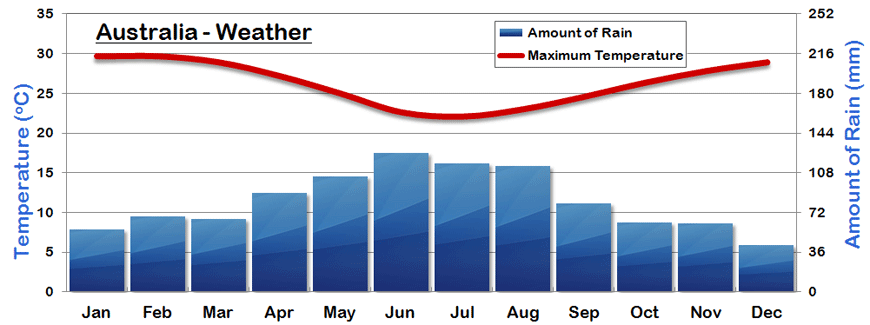Temperature in Australia in November: Spring or Summer?
November is an intriguing month in Australia, situated precariously between the tail end of spring and the onset of summer. The meteorological nuances during this transition period can lead to some perplexing weather patterns and temperatures, making it a topic of interest for both locals and travelers alike. Understanding how temperatures in November shift across different regions is essential for planning outdoor activities, agricultural endeavors, and even travel itineraries.
As November progresses, Australians eagerly anticipate the warmer weather that heralds the approach of summer. However, this month is characterized by fluctuating temperature ranges that reflect the diverse climates found across the continent, from the temperate south to the tropical north.
For example, southern states such as Victoria and Tasmania typically experience mild and pleasant conditions during November. Average temperatures in these regions often hover between 15°C and 25°C (59°F to 77°F). This pleasant climate is ideal for outdoor activities, such as hiking the scenic trails of Tasmania or enjoying the blooming flowers at Melbourne’s famed Royal Botanic Gardens. In contrast, the regions situated closer to the equator, such as Queensland and the Northern Territory, bask in significantly warmer temperatures. Here, average daily highs can range from 25°C to 35°C (77°F to 95°F), often accompanied by increased humidity levels that can make the atmosphere feel even hotter.
The Changing Seasons: Spring in Transition
As November unfolds, it effectively serves as a bridge between the vibrant blossoms of spring and the sweltering heat of summer. The lingering effects of spring can still be felt, especially in more temperate areas where the landscape is bursting with new life. Flowers bloom, and gardens flourish, providing a picturesque backdrop for various outdoor events and festivals held across the country. The comfortable temperatures allow for activities such as picnics in the park, while the increasing sunlight duration contributes to a lively and vibrant atmosphere.
However, it is important to recognize that the seasonal transition can also yield unpredictable weather patterns. Sudden temperature shifts and sporadic rainfall can occur, particularly in southern states, where spring showers may make an unexpected appearance. This unpredictability can disrupt plans, underscoring the need for flexibility when organizing activities. Moreover, with the approach of summer, thunderstorms can become commonplace in the northern regions, resulting in heavy rainfall and elevated humidity levels.
Summer’s Early Arrival: Embracing the Heat
By the end of November, the unmistakable symptoms of summer begin to manifest. The temperatures continue their upward trajectory, leading to prolonged periods of heat across much of Australia. Regions such as Darwin and Cairns can register extreme temperatures with highs reaching up to 40°C (104°F) during particularly hot days. Notably, these areas also experience the “build-up” season, referring to the humidity and heat that precedes the monsoonal rains typical of summer. It can be a period of discomfort for many, as the sweltering conditions compel individuals to seek air-conditioned spaces or swim in the cooling waters of the Great Barrier Reef.
This rapid warming has implications for various sectors, including agriculture, tourism, and public health. Farmers must navigate the challenges posed by rising temperatures, such as ensuring crop resilience and managing water resources wisely. Conversely, tourists flock to coastal areas to escape the heat, leading to an uptick in hotel bookings and recreational activities like surfing and snorkeling.
Conclusion: The Dual Nature of November
In conclusion, November in Australia serves as a fascinating example of the continent’s climatic diversity and the interplay between spring and summer. From mild temperatures in the south to intense heat in the north, the month signifies a transition that impacts numerous facets of life. Whether one is drawn to the delightful springtime ambiance or the emerging summer heat, November invites exploration and appreciation of Australia’s unique weather patterns. With proper planning and awareness of regional variations, individuals can fully embrace the joys and challenges that this season brings.
You May Also Like
Best Fish to Catch in Australia: A Guide for Anglers
Australia boasts an extraordinary diversity of fish species, making it …
Emily Bay Norfolk Island: A Hidden Gem in the Pacific
Emily Bay, a picturesque enclave nestled on the sun-kissed shores of …
Holidays on August 23: Global Festivities & Observances
August 23 is a date that carries a bouquet of cultural significance …





